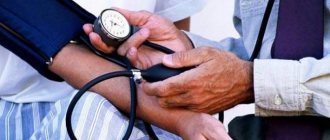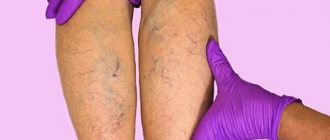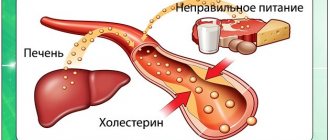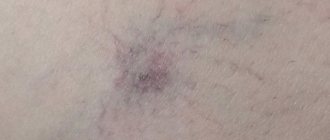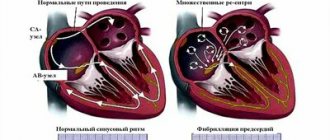Chemotherapy is widely used to treat cancer. Special drugs prevent the division of cancer cells, but at the same time they also affect other cells in the body. This leads to various side effects, one of which is leukopenia – a decrease in white blood cells.
According to statistics, a decrease in leukocytes in the blood after chemotherapy becomes noticeable approximately 5-8 days after starting to take the drugs. The incidence of this side effect is estimated differently: if, according to some researchers, we can talk about 16% of patients suffering from leukopenia, then according to other scientists, the proportion of people with a reduced level of leukocytes reaches 59% of the total number of those who were prescribed chemotherapy.
Leukocytes or white blood cells protect the body from everything that is genetically foreign to it. They are divided into two groups:
- granulocytes - eosinophils, neutrophils and basophils;
- agranulocytes – monocytes and lymphocytes.
Each cell type has its own clearly defined function.
Eosinophils form antiparasitic immunity. They are also responsible for some hypersensitivity reactions and can be both causative agents of allergic reactions and their inhibitors.
Neutrophils provide the body's defense against fungi and bacteria. Their cytoplasm contains granules that contain proteolytic enzymes that destroy pathogenic microorganisms.
Basophils are involved in allergic reactions and inflammatory processes. Their cytoplasm contains granules with histamine, which, when released, helps to dilate capillaries and lower blood pressure.
Monocytes are the precursors of macrophages. They participate in the phagocytic reaction, capturing and digesting particulate matter.
Lymphocytes are divided into several groups and, depending on their specialization, are capable of producing antibodies, regulating and suppressing the immune response, and fighting viral, tumor and atypical cells.
Leukopenia after chemotherapy: main symptoms
The main symptoms of leukopenia are:
- joint pain;
- dizziness;
- loss of appetite;
- general weakness;
- chills, increased body temperature.
Why do the above symptoms occur? They indicate intoxication of the body. A decrease in the level of leukocytes after chemotherapy can be indicated not only by a sharp rise in body temperature, muscle pain and bloating, but also by a feeling of shortness of breath that occurs instantly and for no apparent reason, the appearance of herpes on the lips, and frequent painful urination.
Leukopenia can cause the development of various infections. A decrease in the level of leukocytes leads to immunosuppression, that is, suppression of the immune system. Because of this, the body becomes more susceptible to viral, fungal and bacterial diseases. Due to the exacerbation of chronic infectious processes, the doctor may decide to cancel antitumor treatment, and this is a direct path to relapse of the oncological process, which can happen in just a few days.
If you experience any of the above symptoms, be sure to tell your doctor. Don’t put it off until tomorrow, contact him the day you feel unwell.
At the same time, specialists, as a rule, also monitor the situation, since the likelihood of this problem occurring is quite high. In order to detect it in a timely manner, the patient is prescribed a series of general blood tests. This allows you to record initial indicators and then monitor their changes in order to identify pathology in time.
Due to the body’s increased sensitivity to infectious diseases, the following recommendations should be followed:
- drink only boiled water and pasteurized milk;
- wash fruits and vegetables thoroughly;
- boil the meat well;
- avoid contact with those who are sick;
- In public places, be sure to wear a protective mask.
In the most difficult situations, treatment in an isolated ward is recommended in order to maximally protect the body from the effects of infections.
How much does the risk of infection increase with a low white blood cell count in a cancer patient?
The risk of developing infectious complications can be roughly assessed by the absolute neutrophil count (ANC):
- more than 1500 cells per µl – there is no risk of infection;
- 1000–1500 cells per µl – low risk of infection;
- 500–1000 cells per µl – moderate risk of infection;
- 100–500 cells per µl – high risk of infection;
- less than 100 cells per µl – an extremely high risk of infection.
This indicator is also assessed by a general blood test with a leukocyte formula, and the attending physician takes it into account when assessing the risks and deciding what measures are needed to ensure the patient’s safety.
Why do leukocytes in the blood decrease after chemotherapy?
The occurrence of leukopenia after chemotherapy is explained by the fact that the drugs involved in the course of treatment destroy not only tumor cells, but also healthy cells of the body. They affect different cells differently. For example, mature and well-differentiated cells in the peripheral blood are less susceptible to the effects of chemotherapy drugs. However, actively dividing young bone marrow cells are more sensitive. The effect of drugs on the red bone marrow leads to a sharp decrease in the number of leukocytes in the blood, as well as red blood cells and platelets.
Drugs that particularly inhibit white blood cells are cyclophosphamide, gemcitabine, doxorubicin, fluoropyrimidines, and taxanes. However, any drugs cause leukopenia to one degree or another.
Most often, the decrease in leukocyte levels reaches peak values 7-14 days after the start of treatment. But each patient has his own situation. Much depends on his age, general health, medications used and their dosage, intensity of treatment and many other factors. For example, young people have greater bone marrow reserves than older people, and, accordingly, their problems are less severe. Therefore, it is important to constantly be under the supervision of a doctor and promptly inform him about symptoms that seem suspicious to you.
Leukopenia – what is it and why is it dangerous?
There are several different types of white blood cells in the human body: neutrophils, basophils, eosinophils, monocytes, T- and B-lymphocytes, natural killer cells. All these types of leukocytes are united by a common function: these cells protect the human body from infectious agents and other foreign agents. Thus, a natural consequence of leukopenia is the development of immunodeficiency and the risk of dangerous infections. The body becomes defenseless against bacteria and viruses that surround us literally everywhere.
As a result, even a banal ARVI, which is mild in most people, can lead to serious consequences in a person with a weakened immune system. Some relatively harmless microorganisms that are part of the natural microflora of the body can also become activated and begin to behave aggressively when immunity decreases.
The number of leukocytes is assessed using a complete blood count. In addition to their total number, you can calculate the leukocyte formula - levels and percentages of different types, as well as the number of mature and young forms. All these indicators have clinical significance and are important in certain cases.
Leukopenia is a condition that has clear laboratory criteria. It is diagnosed when the level of white blood cells in the blood drops below 4000 cells in 1 μl or below 4 × 109/l. There are four degrees of severity of this condition, they are presented in the table below.
| Degree of leukopenia | Level of leukocytes in the blood, 109/l |
| Mild – 1st degree | 4 – 3 |
| Moderate – 2nd degree | 3 – 2 |
| Severe – 3rd degree | 2 – 1 |
| Agranulocytosis (reduction occurs due to granulocytes and monocytes) – grade 4 | <1 |
In addition, there are types of leukopenia, depending on which specific leukocytes have decreased:
- Neutropenia is a decrease in the level of neutrophils less than 1200–1500/μl. This type of leukocyte provides innate immunity, and it is they who are primarily involved in the development of inflammation. They “devour” pathogenic microorganisms, as well as fragments of destroyed cells.
- Lymphopenia is a decrease in the level of lymphocytes less than 1000/μl. This type of leukocyte provides adoptive immunity. These are the main cells of the immune system: B lymphocytes produce antibodies that recognize infectious agents, and T cells destroy pathogens. The consequences of lymphopenia depend on the number of which type of lymphocytes has decreased.
- Monocytopenia is a decrease in the level of monocytes less than 500/μl. This type of leukocyte penetrates from the blood into tissues and provides local protection there.
There are many reasons for the development of leukopenia. And this problem often arises in cancer patients.
How to raise or increase white blood cells after chemotherapy
The level of leukocytes after completing the next chemotherapy course can recover on its own. The oncologist must monitor the patient and control this process. If recovery occurs without special stimulants, then there is no reason to worry.
It’s another matter if more than 7-10 days have passed since the completion of the course, and leukopenia persists. In this case, special measures must be taken.
How to raise white blood cells after chemotherapy? It is important to adjust your diet so that it contains foods with a high content of vitamins A, B12, C and E, folic acid, carotenoids, zinc, selenium, and omega-3 fatty acids. Recommended to eat:
- red meat;
- chicken eggs;
- almonds and walnuts;
- garlic;
- carrot;
- citrus;
- seafood;
- apricots;
- beans;
- lentils;
- peas.
For moderate or severe leukopenia, this will not be enough. The doctor prescribes special medications - they can be in the form of tablets and ointments, applied rectally, or administered as intramuscular or intravenous injections. The choice of a specific drug, method of administration and its dosage is determined by a specialist depending on the patient’s age, state of health and other factors. The most popular means for increasing leukocytes are Neupogen, Leukogen, Methyluracil, Leukomax, Remaxol.
An effective modern treatment method is the use of CSF, long-acting colony-stimulating factors. CSF is an artificially created form of granulocyte proliferation stimulating factor. They are introduced into the body, after which they are naturally produced in the bone marrow and promote the production of neutrophils. Due to the high effectiveness of this method, one injection of the drug after each cycle of chemotherapy treatment is often sufficient. But CSF can be administered only as prescribed by an oncologist who is aware of all the associated contraindications.
Under no circumstances should you self-medicate. This applies not only to self-prescription and administration of drugs, but also to replacing them with so-called traditional medicine. The use of various herbal decoctions and tinctures, steamed oat seeds, barberry leaves or nettles does not make it possible to restore leukocytes. Reports of the effectiveness of such drugs are nothing more than a placebo effect. If you use them instead of truly effective drugs in a difficult situation, the body’s condition can significantly worsen.
Medicines to raise white blood cell levels during treatment
First and foremost, it is important to take steps early to prevent low white blood cells after and during chemotherapy. To do this, at Euroonko clinics, the condition of all patients is carefully assessed before starting a course of treatment, and all necessary studies and laboratory tests are carried out. If there are chronic diseases that can affect the number of leukocytes, they are also treated.
To fight cancer, combinations of chemotherapy drugs with different mechanisms of action are most often used: this helps make treatment more effective. But a weakened patient can be prescribed just one drug (monotherapy) to reduce the risks. During treatment, the patient's condition is constantly monitored, including through laboratory tests. If your white blood cell count drops significantly, anticancer therapy may be stopped temporarily until the white blood cell count returns to normal.
The level of leukocytes can be increased using drugs from the group of colony-stimulating factors (CSF):
- granulocyte colony-stimulating factors (G-CSF) filgrastim (Neupogen), lenograstim (Granocyte);
- granulocyte-macrophage colony-stimulating factor (GM-CSF) – molgramostin (Leukomax).
These drugs stimulate the formation of new white blood cells in the red bone marrow, and new cells enter the blood. But they are used only strictly according to indications and under the supervision of a doctor - they cannot simply be bought at a pharmacy and taken independently. CSF is used to prevent a severe, life-threatening condition - febrile neutropenia . This complication is accompanied by an increase in body temperature of more than 38 degrees against the background of a decrease in the level of neutrophils to less than 500 cells per μl (0.5x109/l). In such cases, treatment must be started immediately. If nothing is done within the next 48 hours, the patient will die with a 50% probability. And even with timely antibiotic therapy, the mortality rate is 10%. Febrile neutropenia indicates that the patient has developed an infection. And its only manifestation is often high temperature.
In particular, the risk of febrile neutropenia occurs when treating lymphomas with combinations of several chemotherapy drugs, with aggressive antitumor therapy regimens, especially in patients over 65 years of age. For afebrile (that is, without an increase in body temperature) neutropenia, CSF is not used. The danger of these drugs is that with frequent use, the resources of the red bone marrow can be severely depleted, and this will lead to even more serious consequences.
CSF is not used directly during the course of antitumor therapy: they are prescribed after waiting some time after the last administration of chemotherapy.
Thus, there are no available and safe drugs that could be used in all patients after a course of chemotherapy to quickly increase the level of white blood cells.
So is there a quick way?
Unfortunately, there is no answer to the question of how to raise white blood cells after chemotherapy in 3 days. The human immune system is very complex; it has many parts. Normally, the number of leukocytes will recover on its own, which can be helped with good nutrition and a generally healthy lifestyle. If any health problems interfere with this, you need to treat them.
It is much more important to think about how to protect yourself from infections while the immune system is weakened and cannot provide effective protection. There are a number of recommendations in this regard:
- Avoid shopping centers, public transport and other crowded places - you can easily “catch” the infection there.
- Avoid contact with people who have ARVI symptoms.
- If you still need to go where there are a lot of people, wear a mask or respirator. Maintain social distance – 1.5–2 meters.
- Adhere to food safety rules. Products such as meat and eggs must be thoroughly cooked. To control, you can purchase a special food thermometer. Vegetables and fruits must be washed thoroughly. You can only drink pasteurized milk. And in general, you should not buy products from hand, in markets. Better in the store. Look carefully at the expiration date.
- Do not drink “raw” water - boil it, use filters.
- Do not eat foods that have been stored for a long time and may have spoiled.
- Wash your hands often with soap.
- Avoid damage to the skin and mucous membranes. When you work at home, in the yard, or when preparing food, wear gloves. Don't scratch your skin. Use a soft-bristled toothbrush.
- Maintain personal hygiene carefully.
- If there are pets in the house, you should not have unnecessary contact with them, you should not take out trays after them, or clean cages or feeders.
If there is any increase in temperature, a cancer patient needs to urgently undergo a blood test. And if any signs appear that may indicate an infection - cough, runny nose, diarrhea, redness and swelling of the skin - you should immediately report them to your doctor.
Doctors at Euroonko clinics take all measures to ensure that the patient endures the course of chemotherapy as comfortably as possible, without significant side effects. They carefully assess the patient’s condition and the existing risks before starting treatment, regularly conduct the necessary control studies, blood tests, and give all the necessary recommendations. Chemotherapy in our clinics, if necessary, is carried out under the guise of maintenance therapy. If the patient has severe concomitant diseases and high risks, our doctors will prescribe treatment that will help normalize the condition and make it possible to carry out active antitumor treatment.
Book a consultation 24 hours a day
+7+7+78

